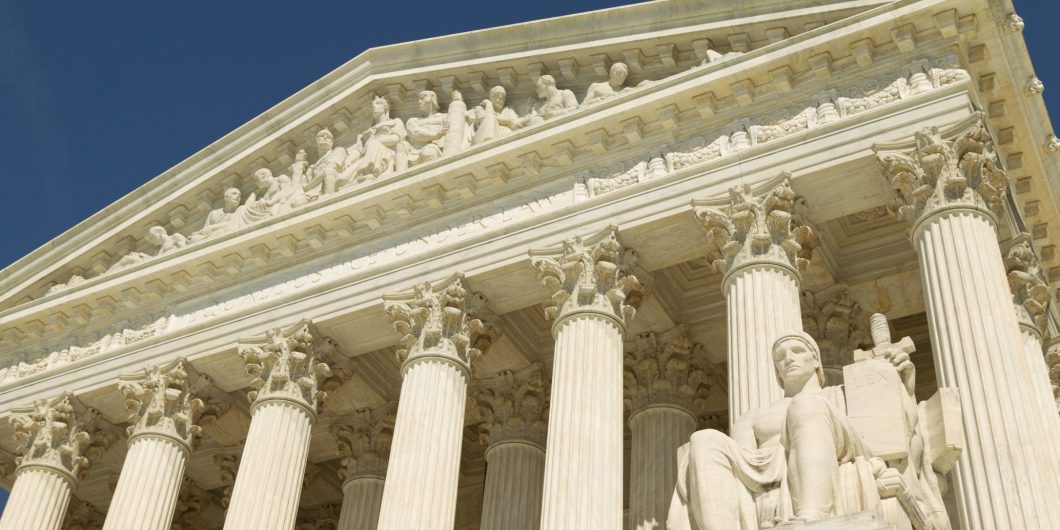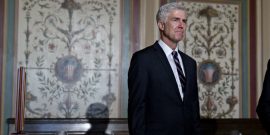A Republic, if You Can Keep It isn’t a vanity project; it’s a serious work of civic education.
The New Court's Docket
Blockbuster Supreme Court cases come in two varieties. One kind resolves the legality of one of the current administration’s top priorities. Another establishes constitutional law on an important issue along the contested fault lines of society. Occasionally cases do both, as when the Supreme Court upheld the constitutionality of the Bank of the United States. But most of the current term’s blockbusters fall into one of the first two broad categories.
Fulton v. Philadelphia
The current docket’s most important case on the fault lines of society is Fulton v. Philadelphia. There the Court must decide whether it is consistent with the Free Exercise Clause for Philadelphia to exclude a Catholic agency from placing foster children with families on the grounds that the agency refuses same-sex couple placements. The case will help determine whether religions with traditional views of sexuality will be able to continue to participate fully in public life as charities and educational institutions. The issue is no longer whether, as George Washington argued, religion provides a necessary foundation of republican life, but whether republican life can flourish when traditional religious influence is officially excluded.
Constitutionally, one of the questions presented in the case is whether Employment Division v. Smith will be overruled. Smith, written by the late Antonin Scalia, held that the Free Exercise Clause does not generally exempt religious believers from conforming their conduct to neutral laws of general applicability. Philadelphia relies on Smith to defend the constitutionality of its practice of excluding agencies that refuse to consider same-sex couple placements. And the Catholic agency expressly asks for Smith to be overruled.
My suspicion, however, is that the Court will decide against Philadelphia while assuming arguendo that Smith remains good law. Philadelphia’s legal regime permits the city to grant exemptions from its general rules. It has refused to grant exemptions for the Catholic charity while granting exemptions from other rules for various reasons to other providers of foster care services. The Court thus might decide to tighten up the definition of neutrality that triggers the application of Smith. Neutral rules would become only those that apply without the exercise of discretion, because such a prophylaxis is necessary to prevent the possibility of discrimination against religious actors. In a recent law review article, then-Professor Amy Coney Barrett, who will likely have joined the Court by the time of argument, cautioned against overruling precedent if a case can be decided on other, narrower grounds. Her counsel may well be heeded in an early case in her tenure.
Texas v. California
The most important programmatic case is the latest challenge against the Affordable Care Act. The Trump administration has long wanted to repeal the act and supports the challenge. The issue in this case flows directly from the way NFIB v. Sebelius previously upheld a portion of the Act. Chief Justice John Roberts’ controlling opinion there held that the requirement to buy insurance, which would have been unconstitutional as a mandate, was nonetheless constitutional as a tax since failure to comply resulted in a higher tax bill. But Congress then zeroed out the “tax,” causing a lower court recently to hold this portion of the Act unconstitutional, because no money was now levied.
Even assuming the mandate provision has become unconstitutional since it lacks monetary consequences, the important practical issue in the case is whether the rest of the Act is severable from that provision. The traditional test for severability is whether Congress would have wanted the other provisions to go into effect, absent the unconstitutional provisions. The almost universal opinion of conservative and liberal commentators is that the rest of the Act should and will be severed. After all, Congress did not repeal the rest of the Act when it changed the mandate provision. At her confirmation hearing, Amy Coney Barrett walked through traditional severability analysis in a way that implied she would likely sever the Act and leave Obamacare essentially unchanged. I predict an 8-1 or 7-2 vote in favor of severability.
If Texas v. California represents the worst of a Court with Amy Barrett on it, it will become harder for Democrats to persuade ordinary voters that they have much to fear.
Assuming that the case is decided in favor of the Act’s retention, it will have more significant political than legal implications. Senate Democrats spent much, if not most, of their time at the Barrett hearing raising fears that the Roberts Court would destroy the Affordable Care Act. When the case comes down with an overwhelming majority in favor of severability, it may take much of the wind out of the sails when it comes to court-packing plans, even in the event of a Biden presidency and unified Democratic Congress. If this case represents the worst of a Court with Amy Barrett on it, it will become harder for Democrats to persuade ordinary voters that they have much to fear.
Trump v. New York
Another important programmatic case concerns the census. President Trump has ordered the Secretary of Commerce to include in his report on the census the number of resident aliens in each state so that the President can, “to the extent feasible,” decide not to include illegal aliens in the enumeration that determines how seats are apportioned in Congress. Plaintiffs challenged this action, saying that it violates a congressional statute implementing the Constitutional provision for apportionment.
The Constitution requires that “representatives shall be apportioned among the several States according to their respective numbers, counting the whole number of persons in each State, excluding Indians not taxed.” While there are non-frivolous arguments that the First Congress understood persons as meaning something more like inhabitants, I think the administration faces an uphill battle persuading the Court that the original public meaning of “persons” in the Constitution and the implementing legislation does not include anyone permanently residing in the state, particularly because the Constitution elsewhere uses the terms “citizen” and “inhabitant,” but here uses the broader term “person.” But my prediction is that the Court will not answer this question directly, holding either that the plaintiffs lack standing or the case is not ripe, because the President has not yet taken any action with respect to the census. The justices might think that this whole issue may well go away in the event of a Biden victory.
Trump v. Sierra Club
In another programmatic case that the Court decided to take up just this last week, it will decide whether the administration had the legal authority to transfer funds to build a border wall. While that case might test the constitutionality of broad delegations to reprogram funds, my prediction is that, like the other important programmatic cases, it will turn out to be a damp squib. A little-noticed question is whether the plaintiffs even possess a cause of action to maintain their suit. In technical terms, plaintiffs must be in the “zone of interests” protected by the transfer statute to complain of its violation. In other words, those who want to sue under the statute must be those whose concerns it was designed to advance. But the statute appears to protect Congress’s authority over the deployment of funds, not the environmental and aesthetic interests that the Sierra Club seeks to vindicate. Thus, my prediction is that this case will be a win for the Trump administration on technical grounds should the President be reelected, and that the case will be mooted out should Biden win.
Mnuchin v. Collins
A likely more important case for the enduring structure of government is the constitutionality of the Federal Housing Finance Agency as an independent agency. Last term the Court in a 5-4 decision held that Congress could not insulate the Director of the Consumer Financial Protection Bureau from presidential removal because that insulation violated the general principle of executive power that the President must have control over his subordinates. The only difference here is that the CFPB has independent financing from the Federal Reserve whereas the FHFA relies for funds on assessments of regulated entities rather than subventions from the Federal Reserve. I think this distinction makes no difference and the Court will permit the director of the FHFA to be fired by the President. The long-term consequence may be to open to constitutional attack the bipartisan boards which the Court has previously permitted to be independent of the President. Those past rulings will be left as derelict barques in a sea of hostile precedent and may be overruled.
Torres v. Madrid
While the cases discussed above will capture the public’s attention, others may have long-term implications for the methodology of constitutional decision making. One of these is Torres v. Madrid, a case that concerns an incident in which the police shot a woman who was trying to escape and then drove herself to a hospital. The constitutional question is whether this unsuccessful effort to stop the woman constitutes a seizure under the Fourth Amendment. If “seizure” is given its ordinary public meaning, the answer seems to be no: one would not say that a sniper seized someone by wounding them. But seizure also has a common law gloss in which physical efforts to stop a suspect, including those using objects like maces, did constitute a seizure. The question in this case may thus turn on whether the Constitution is given an ordinary or a legal meaning—an issue of importance in originalist theory. This goes to show that not all constitutional cases of enduring consequence make the front page.
This term is not shaping up to be hugely consequential overall. This is particularly true if, as I predict, the Court avoids directly invalidating the most important actions of either Congress or the President in the cases that are before it. Given the controversies in the rest of our political institutions and culture at large, the justices are no doubt grateful for a docket that will not put them in the eye of the storm.

